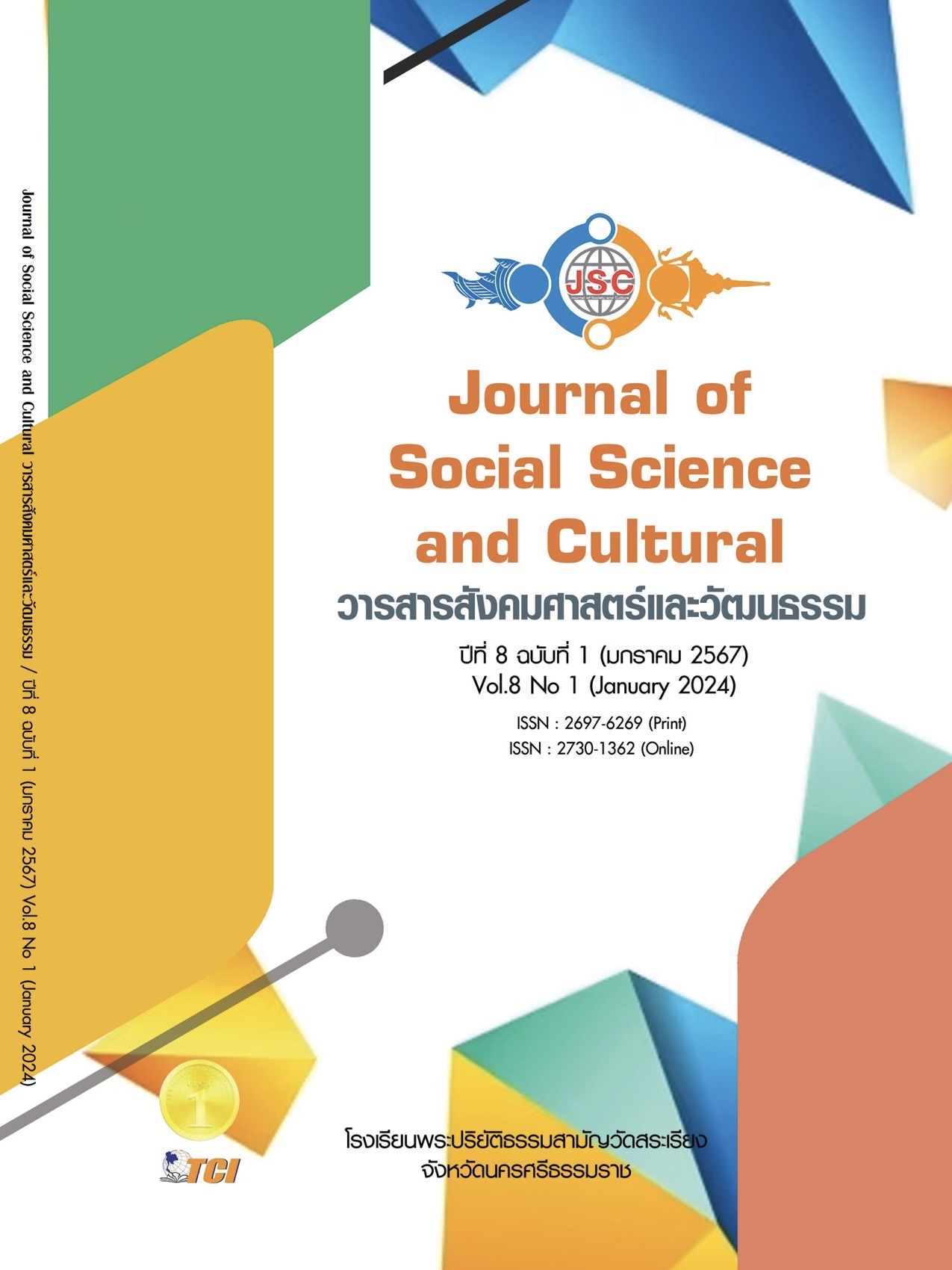การศึกษาทางเศรษฐศาสตร์เพื่อการประเมินมูลค่ามรดกทางวัฒนธรรมของวัด และโบราณสถานในจังหวัดพระนครศรีอยุธยา
Main Article Content
บทคัดย่อ
บทความวิจัยนี้มีวัตถุประสงค์เพื่อ 1) ศึกษาพฤติกรรมในการเดินทางมาท่องเที่ยววัดและโบราณสถาน 2) ประเมินมูลค่าทางมรดกวัฒนธรรมของวัดและโบราณสถาน และ 3) ศึกษาแนวทางการส่งเสริม อนุรักษ์ และฟื้นฟูวัดและโบราณสถานในจังหวัดพระนครศรีอยุธยา กลุ่มตัวอย่างคือ นักท่องเที่ยวในจังหวัดพระนครศรีอยุธยา 350 ตัวอย่าง และผู้ให้ข้อมูลสำคัญ 10 ท่าน เป็นการวิจัยแบบผสานวิธี ประกอบด้วย การวิจัยเชิงปริมาณและวิจัยเชิงคุณภาพ วิเคราะห์ข้อมูลโดยใช้สถิติค่าความถี่ ร้อยละ วิเคราะห์การถดถอยโลจิสติกไบนารี และแบบสัมภาษณ์ชนิดกึ่งโครงสร้าง ผลการวิจัยพบว่า พฤติกรรมในการเดินทางท่องเที่ยว คือ ทราบแหล่งข้อมูลจากเพื่อน/ญาติ ใช้รถยนต์ส่วนตัวในการเดินทาง จุดประสงค์หลักของการเดินทาง คือ ไหว้พระเคารพสิ่งศักดิ์สิทธิ์ เดินทางมากับครอบครัว ค่าใช้จ่ายที่ใช้ 500 - 1,000 บาท ใช้เวลาระหว่างการทำกิจกรรมน้อยกว่าหนึ่งชั่วโมง ต้องการเดินทางกลับมายังสถานที่นี้อีกพร้อมแนะนำสถานที่นี้ให้กับผู้อื่น ส่วนการประเมินมูลค่ามรดกวัฒนธรรมนักท่องเที่ยวเต็มใจที่จะจ่ายค่าโครงการอนุรักษ์ ฟื้นฟูวัดและโบราณสถาน ในช่วง 1 - 200 บาทต่อปี มูลค่าความเต็มใจที่จะจ่ายสนับสนุนโครงการฯ 194.50 บาทต่อคนต่อปี เมื่อพิจารณาโอกาสที่นักท่องเที่ยวมีความเต็มใจที่จะจ่ายค่าโครงการฯ พบว่า ระดับรายได้สุทธิต่อเดือนมีอิทธิพลต่อความเต็มใจที่จะจ่ายค่าโครงการฯ ที่ระดับนัยสำคัญทางสถิติ 0.05 โดยมีโอกาสที่จะจ่ายมากขึ้น 0.103 เท่า 0.125 เท่า และ 0.254 เท่า ตามลำดับ สำหรับแนวทางการอนุรักษ์ ฟื้นฟูวัดและโบราณสถาน คือ การอนุรักษ์โบราณสถานและวัด การส่งเสริมการศึกษาและการเรียนรู้ การรักษาสิ่งแวดล้อมบริเวณวัดและโบราณสถาน การส่งเสริมการท่องเที่ยวทางวัฒนธรรม การจัดการด้านนโยบาย และการสร้างความร่วมมือจากประชาชนและหน่วยงานในท้องถิ่น
Article Details
References
กรมการท่องเที่ยว กระทรวงการท่องเที่ยวและกีฬา. (2561). คู่มือการการตรวจประเมินคุณภาพมาตรฐานการท่องเที่ยวเชิงวัฒนธรรม (พิมพ์ครั้งที่ 2). กรุงเทพมหานคร: โรงพิมพ์องค์การสงเคราะห์ทหารผ่านศึกในพระบรมราชูปถัมภ์.
กรมศิลปากร. (2566). อุทยานประวัติศาสตร์. เรียกใช้เมื่อ 10 ตุลาคม 2566 จาก http://www.finearts.go.th.
การท่องเที่ยวแห่งประเทศไทย (ททท.). (2564). ประเภทของแหล่งท่องเที่ยว. เรียกใช้เมื่อ 13 สิงหาคม 2565 จาก http://osthailand.nic.go.th/masterplan_area/userfiles/files/Tourism.pdf.
ชยุตม์ วะนา และสิริกร เลิศลัคธนาธาร. (2561). มูลค่าทางเศรษฐศาสตร์ของแหล่งท่องเที่ยวทางประวัติศาสตร์อุทยานประวัติศาสตร์เมืองสิงห์จังหวัดกาญจนบุรี กับความเต็มใจที่จะจ่ายของนักท่องเที่ยว. วารสารบัณฑิตวิทยาลัยมหาวิทยาลัยราชภัฏจันทรเกษม, 13(2), 85-99.
ชลลดา มงคลวนิช. (2558). ทัศนคติและพฤติกรรมของเยาวชนไทยต่อแหล่งมรดกโลกทางวัฒนธรรม กรณีศึกษา: อุทยานประวัติศาสตร์พระนครศรีอยุธยา. วารสารการบริการและการท่องเที่ยวไทย, 10(2), 3-17.
ทองคำ ดวงขันเพ็ชร. (2564). การจัดการมรดกทางวัฒนธรรมอย่างสร้างสรรค์โดยการมีส่วนร่วมของชุมชนลุ่มน้ำโขง. Journal of Modern Learning Development, 6(2), 44-58.
ทิชากร เกสรบัว. (2565). พฤติกรรมและความเต็มใจจ่ายของนักท่องเที่ยวเพื่อการท่องเที่ยวในวิสาหกิจชุมชนเนิน หอม อำเภอ มือง จังหวัดปราจีนบุรี. วารสารการบัญชีและการจัดการ, 14(2), 85-103.
นัฐศิพร แสงเยือน และคณะ. (2560). มูลค่าทางเศรษฐศาสตร์ในการอนุรักษ์ภูมิทัศน์วัฒนธรรมพื้นที่ชายน้ำ เมืองอุทัยธานี. วารสารการจัดการ มหาวิทยาลัยวลัยลักษณ์: 6(2), 7-16.
ปุญญาวีร์ ศรีสันเทียะ และคณะ. (2560). การประเมินมูลค่าการคงอยู่ และมูลค่าการใช้ประโยชน์ของพลับพลึงธาร (Crinum thaianum) ในจังหวัดระนองและจังหวัดพังงา. ใน การประชุมวิจัยนานาชาติทรัพยากรธรรมชาติ และสิ่งแวดล้อม ครั้งที่ 2 (หน้า 84 - 88). คณะสิ่งแวดล้อมและทรัพยากรศาสตร์ มหาวิทยาลัยมหิดล.
พีรวัชร์ ราชิวงศ์. (2562). แนวทางในการอนุรักษ์โบราณสถานในวัดมณีวนาราม จังหวัดอุบลราชธานี. วารสารวิทยาสงฆ์นครลำปาง, 8(2), 179-190.
ศูนย์ข้อมูลมรดกโลก กระทรวงวัฒนธรรม. (2564). นครประวัติศาสตร์พระนครศรีอยุธยา. เรียกใช้เมื่อ 15 มิถุนายน 2564 จาก http://164.115.22.96/heritage_culture2.aspx.
สมเกียรติ ชัยพิบูลย์. (2565). การประเมินมูลค่าทางเศรษฐศาสตร์ป่าชุมชนบ้านม่อนเงาะ ตำบลเมืองก๋าย อำเภอแม่แตง จังหวัดเชียงใหม่. วารสารมนุษยศาสตร์และสังคมศาสตร์ มหาวิทยาลัยสารคาม, 41(6), 153-170.
สำนักงานจังหวัดพระนครศรีอยุธยา. (2561). บรรยายสรุปประจำปี 2560. วัฒนธรรม. เรียกใช้เมื่อ 3 พฤษภาคม 2561 จาก http://ww2.ayutthaya.go.th/files/com_news_document/2019-01_1d84e7b8b218081.pdf.
อธิราช ทวีปฏิมากร. (2561). ความเต็มใจจะจ่ายค่าบริการน้ำประปาเพื่ออนุรักษ์และฟื้นฟูป่าต้นน้ำ. พัฒนาการเศรษฐกิจปริทรรศน์, 12(1), 109-133.
Aaker, D. A., et al. (2001). Marketing research (7th ed.). New York: John Wiley & Sons.
Abedini, A., et al. (2016). Estimating the outdoor recreational value of lavizan jungle park of Tehran using contingent valuation method (CV). Journal of Ecology, 6(5), 225-234.
Cochran, W. G. (1977). Sampling Techniques (3rd ed.). New York: Wiley.
George, D. & Malley, M. (2003). Using SPSS for windows step by step: a simple guide and reference (4th ed.). Boston: Allyn & Bacon.
Qiu, Y., et al. (2021). Valuing recreational fishery attributes, opportunities and associated activities in China form the tourists’ satisfaction perspectives. Marine Policy, 131, 1-10. doi: 10.1016/j.marpol.2021.104616.
Rovinelli, R. J. & Hambleton, R. K. (1977). On the use of content specialists in the assessment of criterion-referenced test item validity. Tijdschrift voor Onderwijs research, 2(2), 49-60.
World Travel & Tourism Council. (2020). Affiliate members global report, volume 4 - global report on food tourism. Madrid, Spain: UNWTO.

